“Go West, young man, go west.” was a cry to push America’s westward expansion. When Horace Greeley first said these words, in 1865, he saw the potential of the fertile lands beyond the Mississippi River. As emigrants began their westward bound travels, new “roads” would spring up that led toward the setting sun. We love learning about the modes of transportation that pioneers and settlers used to traverse the continent. A visit to the Great Platte River Road Archway Monument provided some keen insight into one of the most popular routes.
We want to thank The Archway for hosting our visit. Rest assured all opinions are our own.
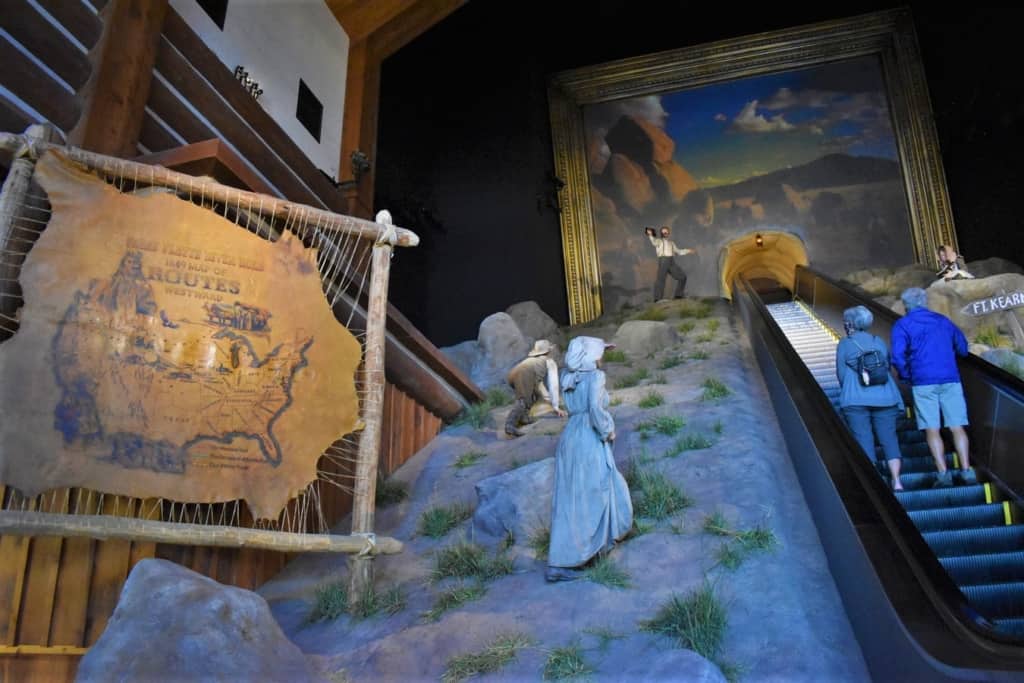
Head West
The Archway is a modern museum dedicated to telling the story of the Platte River’s path through Nebraska. While the portion they show begins with westward bound settlers, this route has much more history. For thousands of years, a variety of indigenous people have lived or traveled along the Platte River. As the buffalo migrated along the river, so did the Native Indian tribes who hunted them. While the Platte River is a temporary home for migrating species, it does not have an abundance of fur-bearing animals. This meant that fur trappers left it unspoiled and undeveloped.
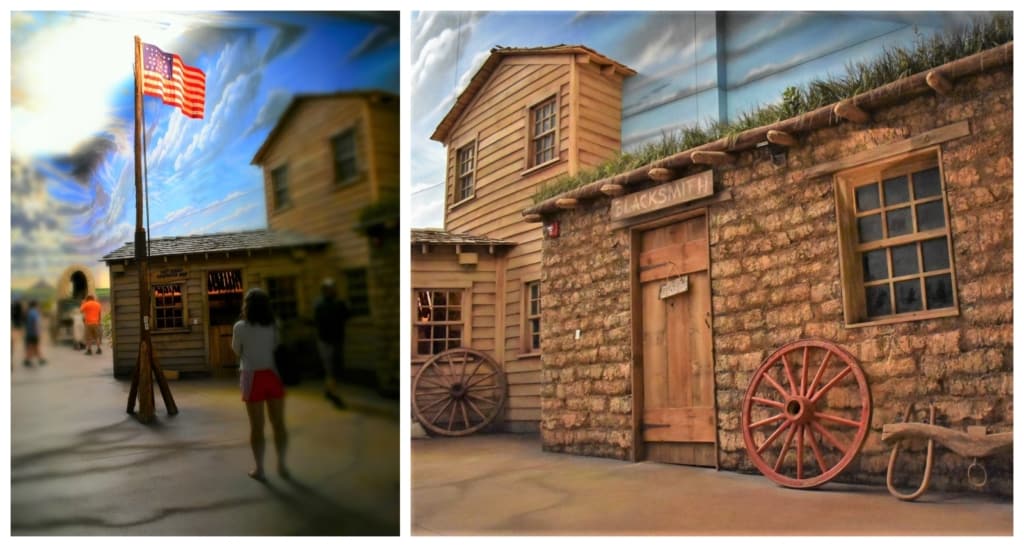
Fort Kearney
By the mid-1800s traffic along the Platte River had increased significantly. Along this path the Oregon, California, and Mormon trails converged. Being about 1/6th of the way to their destination, this site seemed ripe for a restocking point. The original settlement, called Dobytown, would relocate closer to the fort and adopt it’s name. Westward bound travelers could restock supplies, trade livestock, and send letters back east to family and friends. It would be one of their last ties to civilization until they reached their destinations.
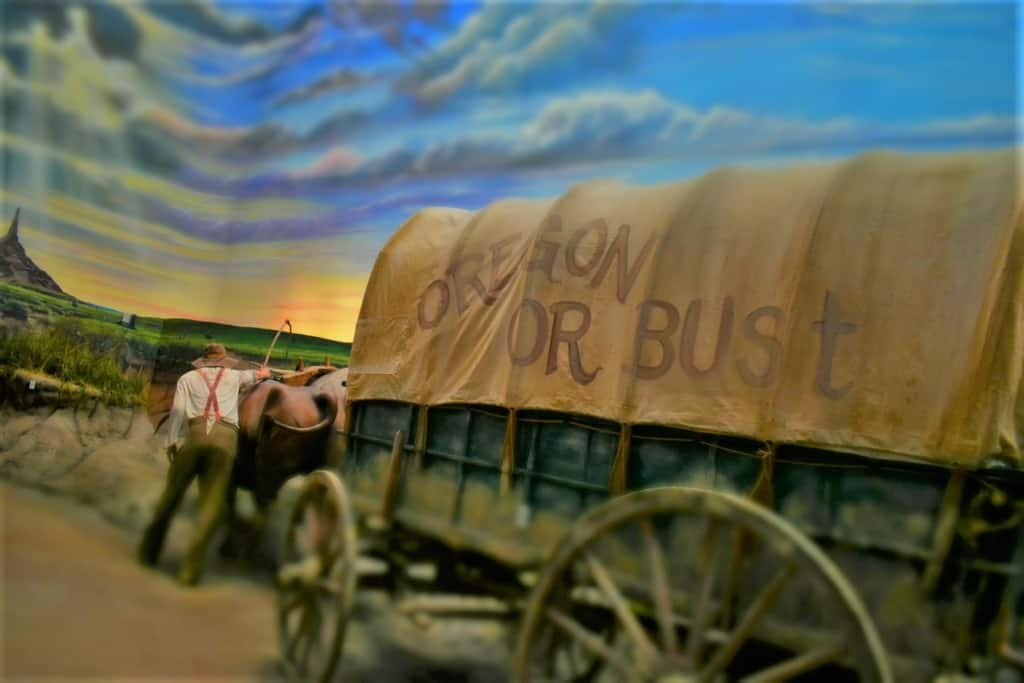
Westward Bound or Bust
One of the most famous routes was the Oregon Trail. Spanning more than 2,000 miles, this westward bound route ran from Independence, Missouri, and Omaha, Nebraska to the western seaboard. It is estimated that somewhere around 400,000 travelers passed along a portion of this pathway. We have had the opportunity to visit other museums that share the stories of these early pioneers. One of the earliest notable parties along the Oregon Trail was “The Great Migration of 1843”. Somewhere between 700 to 1000 emigrants ended up creating the route that would be used by others.
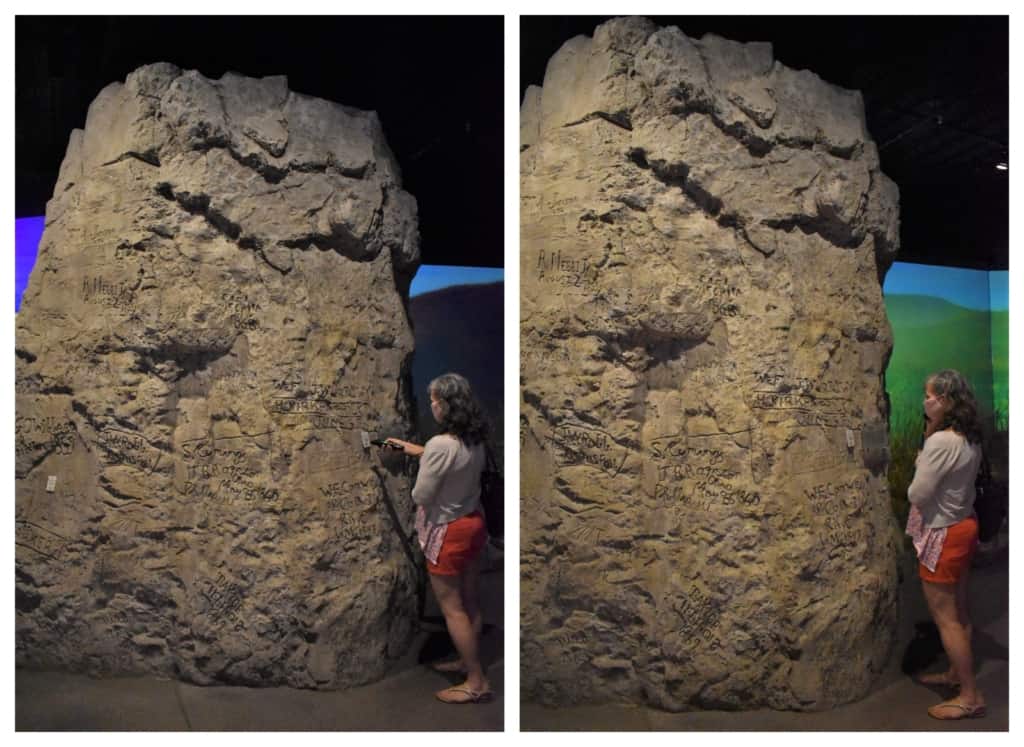
Education Made Easy
The Archway is certainly one of the most unique museums that we have visited. Constructed as a bridge over Interstate 80, this 1500 ton structure suspends visitors above the flowing traffic below. Visitors to The Archway will find an audio-visual experience that immerses them into the story of Westward Expansion. Handheld devices allow guests to hear details about events and circumstances that affected the growing nation. Placards placed around the museum trigger each interesting tidbit that flows together to tell the complete story.
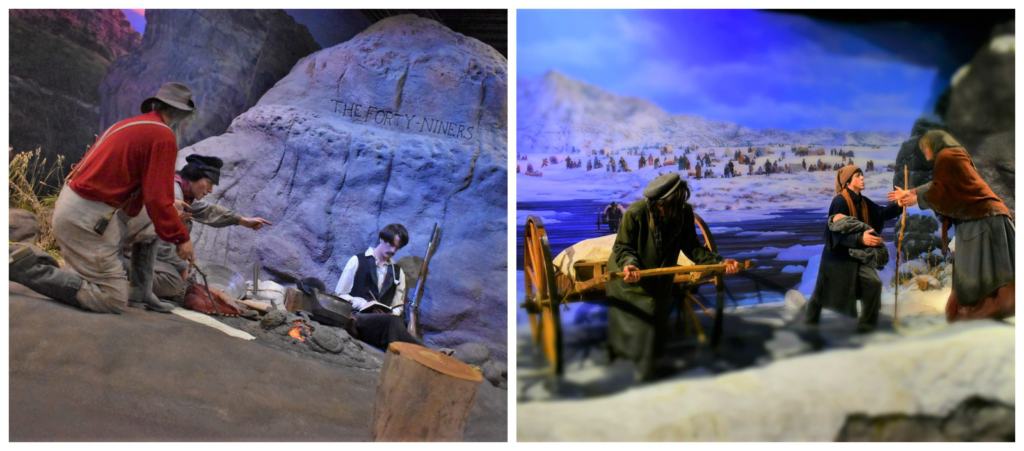
Trails West
As we had discovered, the Platte River Trail would eventually split into three significant paths. The Archway does a great job of detailing the various destinations that each group of adventurers were seeking. The California Gold Rush created a need for a quick route to the mining fields. Crossing the wide and shallow Platte River was less dangerous than some of the other potential routes. While the silty water was not preferred for drinking, it could pass if needed and by allowing the silt to settle. Mormons looking to escape persecution would follow a similar path on their journey to Utah.
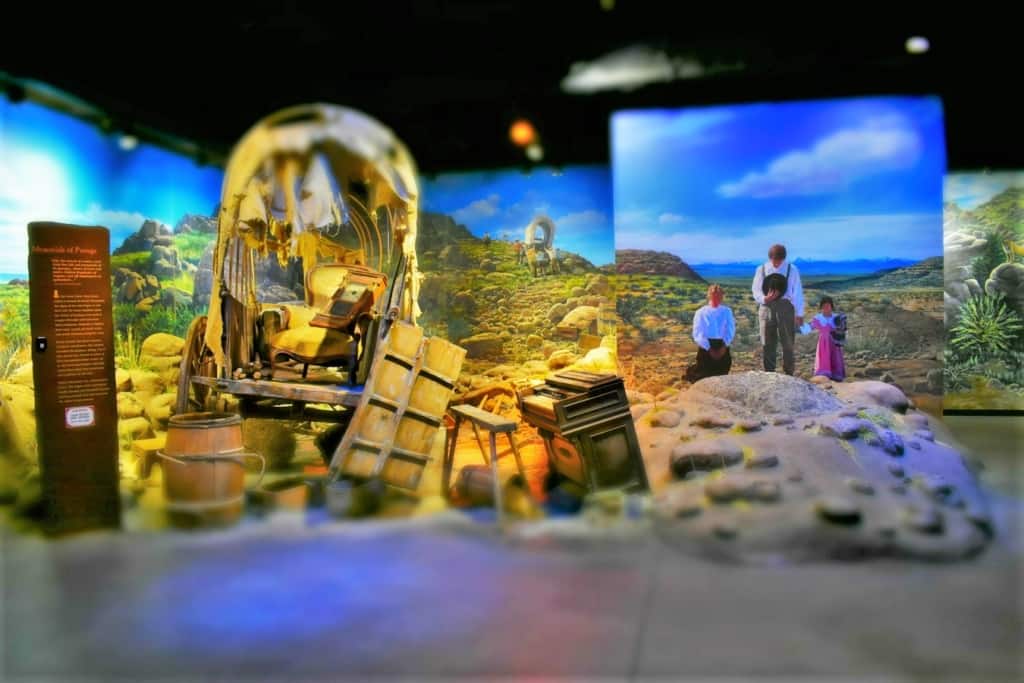
The Harsh Realities
Travel along the trails was fraught with peril and death became an ever-present companion. With so many camping in the same spots along the trails, infestations of cholera became commonplace. Since this disease is so easy to infect and spread, it soon passed farther down the trail. The death rate for those contracting the disease would often run between 60 and 90 percent. Soon, the trail would be dotted with markers of those lost along the way. In later years, new emigrants would find a continuous line of litter along the trails. Keepsakes and unnecessary items became burdens during the westward bound journey, and would soon be left to decay in the scorching sun.
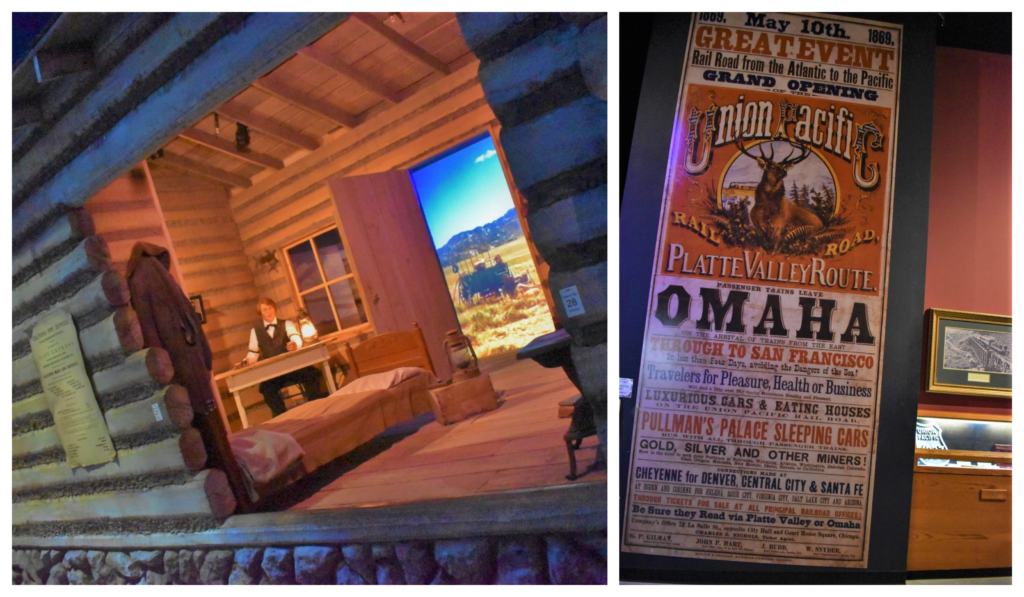
Mass Migrations
After a few years, the citizens along the coast had grown to sizeable numbers. The long process of getting mail to the west coast called for a solution. This problem was addressed with the creation of the Pony Express. The goal was to cover the 1800 miles, from St. Joseph, Missouri to Sacramento, California, in only ten days. While the operation would be a success, the company would not be awarded the government contract. Eventually, the telegraph lines would be strung across the continent and remove the need for fast mail service. By the 1860s, the first transcontinental railroad would provide a new way for emigrants to complete their westward bound trips.
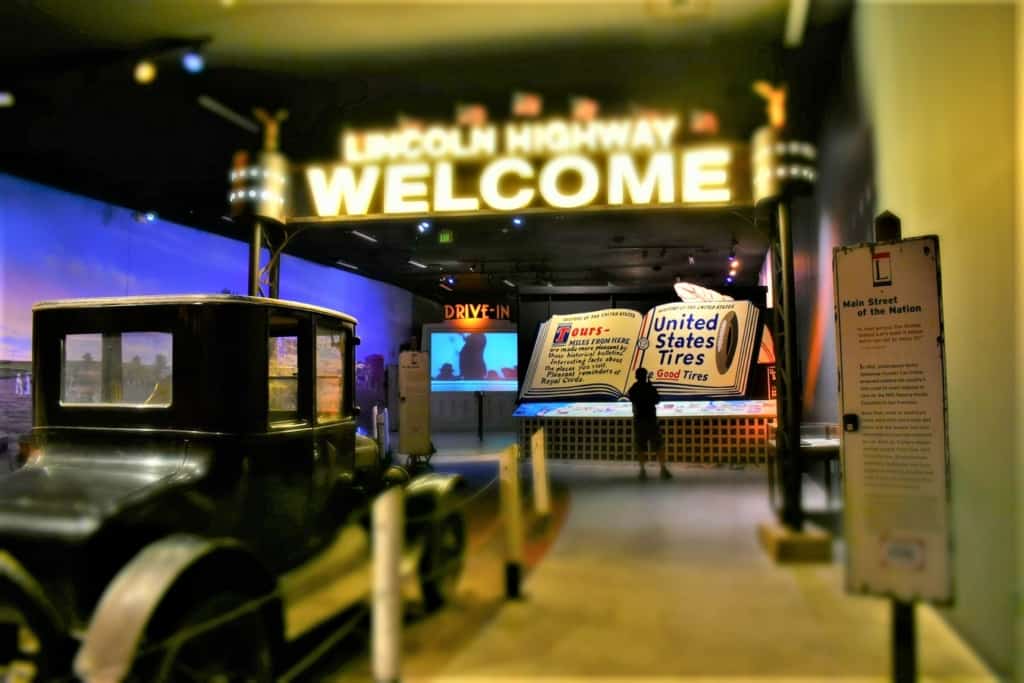
Automobiles Take the Lead
Our trip through The Archway led us upstairs to the 1900s. The invention of the automobile had revolutionized travel. People were no longer required to plan their trips by where the railroads ventured. The freedom of the open roads would push the nation to open up the lands that had been difficult to reach in the past. One of the earliest highways, to cross the continent, was the Lincoln Highway. Covering nearly 3400 miles, it connected New York City with San Francisco. The nation was once again on the move.
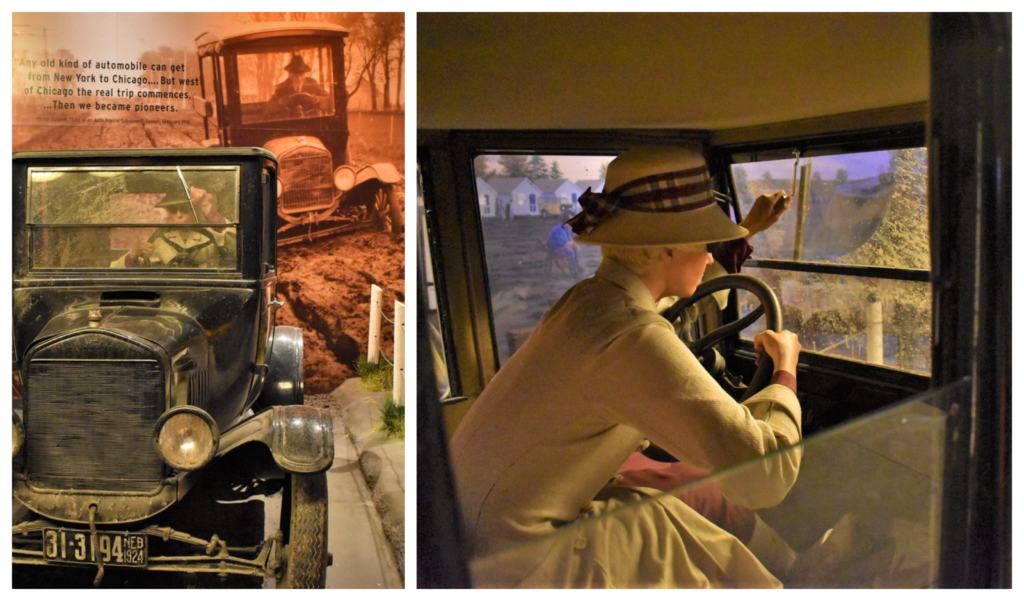
Early Hazards
Westward bound travelers wouldn’t find beautifully paved roads in the early days. Many trips might involve mud-filled paths in Iowa or flooded roads throughout the Midwest. Traversing the drifting sands in Utah would cause many radiators to overheat. These early explorers would be required to set out with plenty of supplies and spare parts, if they wanted to make a successful journey.
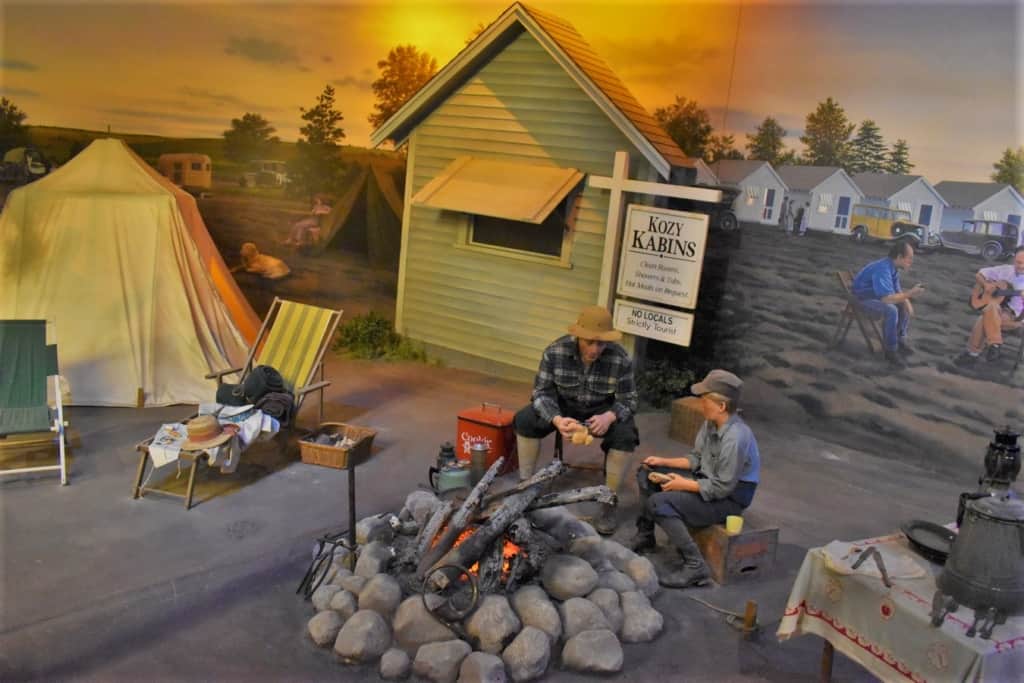
Roadside Stops
As we explored the exhibits, it made us think about auto travel in those early days. The press had suggested that it would take 20 to 30 days to complete a cross-country excursion. Gas stations would have been less commonplace, so it was advisable to fill up at every opportunity. The advancements being made during this period opened up exploring for more Americans. While many people in the 1800s had rarely traveled far from home, the automobile gave new-found freedom to wander and roam. It wouldn’t take long for savvy entrepreneurs to seize on the opportunity to create businesses geared toward travelers.
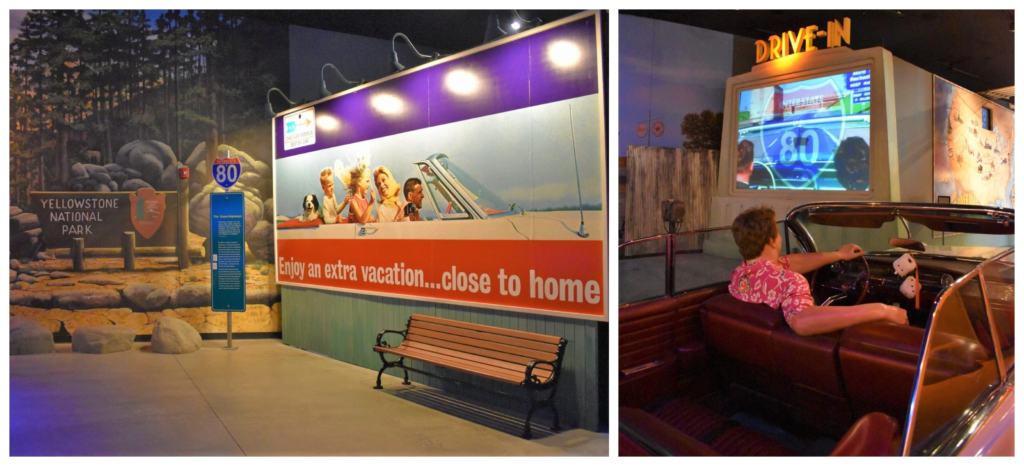
America’s Interstates
As road improvements continued, it paved the way for a new style of family vacations. Hitting the open road became the new adventure. Fantastic destinations, that had previously only been dreamed of, were now easily within reach. By the end of the World War II, automobile culture had permeated the entire fabric of American life. In the 1950s, the number of registered cars would more than double. The introduction of the interstate system allowed travel that was uninterrupted by stoplights. America was on the move and I-80 was one of the major arteries of this new system.
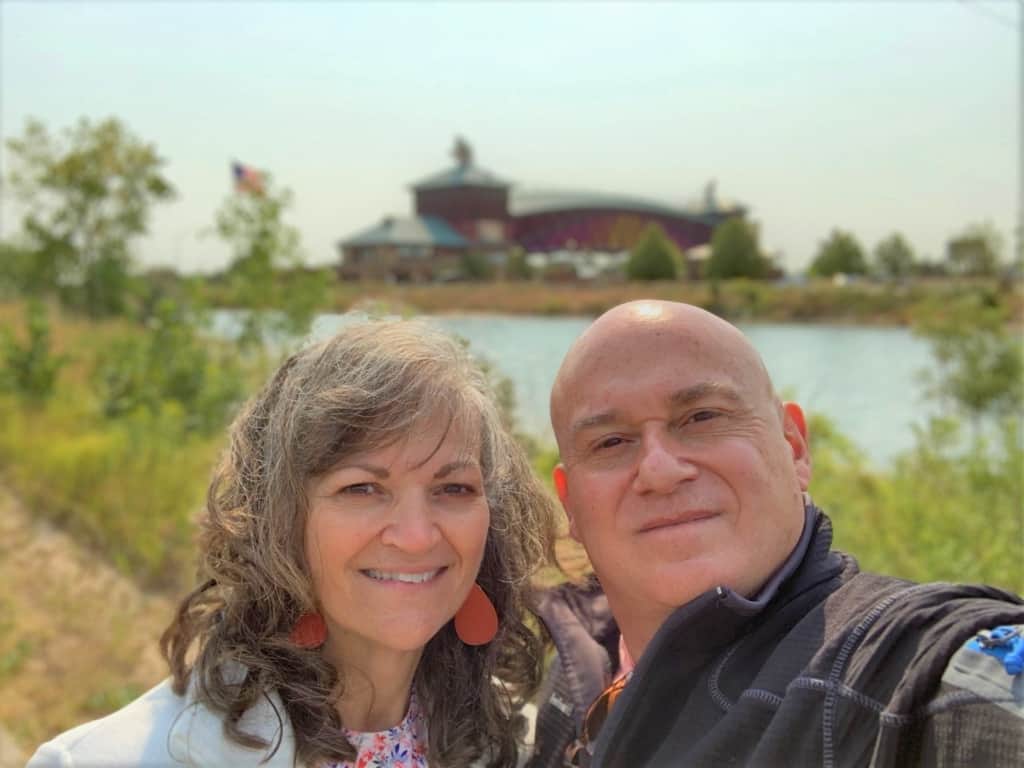
Taking a Break From the Road
The Archway had definitely surpassed our imagination. Seeing this structure, as you approach along the interstate, it is hard to imagine the amount of displays they have stuffed inside. Now that we had seen it firsthand, it was a story we just had to tell. After thanking the staff for their hospitality, we headed outside to check out the rest of the campus. Walking and biking trails follow the bends of the Platte River, which runs next to the museum. We strolled along the path to check out the sculptures that have been assembled. There is also a sod house that visitors can check out. This ended up being a fantastic break from the road.


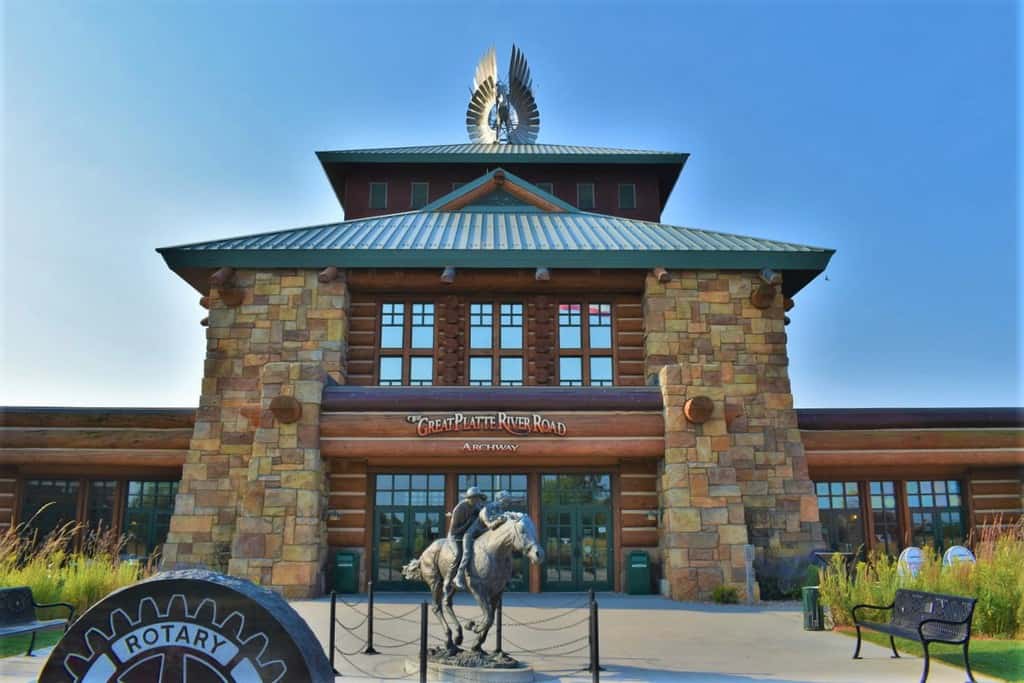

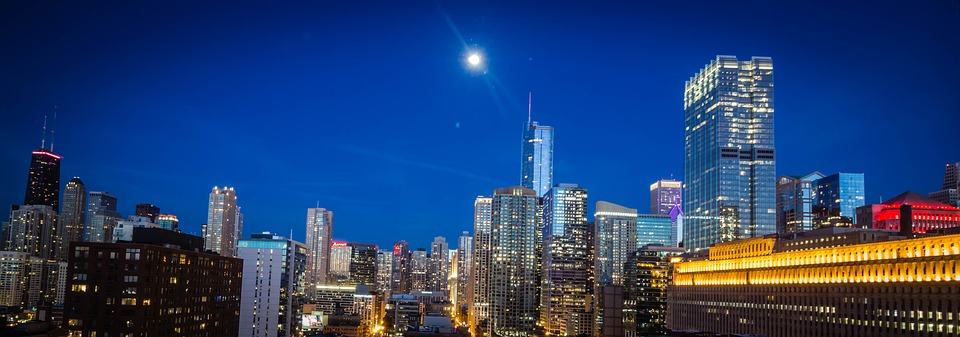
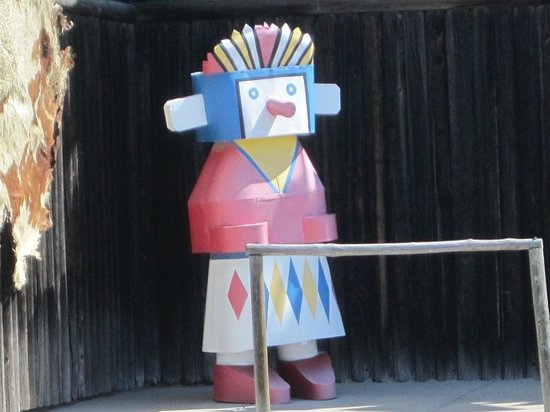
You’re making me feel so nostalgic about trip from on I-80! I traveled that route through Nebraska many times since I was a kid with the family. When we last traveled that way several years ago, we took note of The Archway as we passed beneath it. I will definitely put in on our itinerary next time we’re traveling along the Platte.
Like you, we had navigated the Lincoln Highway many times but had neglected to stop in The Archway. We are so glad we finally took the time to tour this amazing museum.
Wow this is spectacular and what amazing dioramas and so well done. I love that entry from the escalators and into a cave. I would love visiting this and haven’t been to the area in probably 30 years.
Well, it sounds like you need to find yourself back in the Midwest for a visit.
You do manage to find some amazing museums! The Archway sounds like another winner. The Oregon Trail and Gold Rush in California sections especially interest me. Hope to see them one day.
Those are two areas that we find interesting, as well. It was also our introduction to the Lincoln Highway.
Another great piece of settler history. I’d love to follow one of those walking trails, to get a small sense of following in their footsteps!
It was a fascinating visit and so interesting to see the wide range of reasons people traveled through this area.
We found the Arch museum really entertaining…and visited Fort Kearney itself where we learned a lot from a friendly knowledgeable guide. This is a worthwhile stop.
We are glad to hear that you have visited, as well. It is certainly an unexpected treasure that offers a great break from the road.